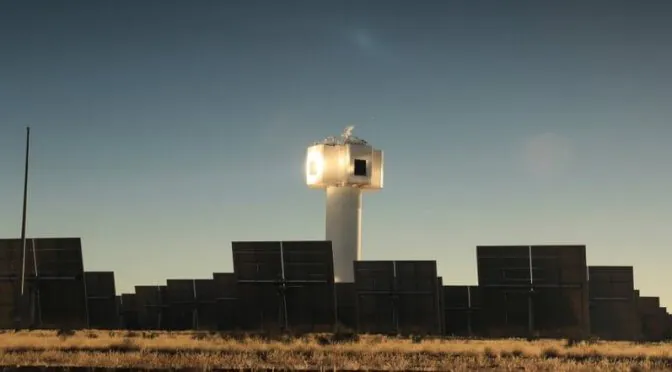The global concentrated solar power (CSP) market is expected to have a substantial growth over the next decade as the latest industry data from GlobalData shows that the global concentrated solar power capacity is estimated to increase significantly from 5.6 GW 2018 to 22.4 GW in 2030 following significant capacity additions by China, Chile, and countries in Middle East North Africa.
According to GlobalData, the global concentrated solar power industry added around 601 MW annual capacity in 2018 with some of the major projects being operational in countries such as Morocco, China, South Africa, Saudi Arabia, and Kuwait. China added around 200 MW of CSP capacity in 2018 which is almost seven times its cumulative installed capacity at the end of 2017.
As the demand for renewable energy continues to grow around the world, the global concentrated solar power market is expected to witness a stronger expansion over the near future.
What is Concentrated Solar Power?
Concentrated solar power systems use different mirror configurations to concentrate the light energy of the sun onto a central receiver (also known as power tower) and convert the energy into heat. Then fluid stored in the central receiver is then heated up to generate steam. The steam will push a turbine to produce electrical power or used as industrial process heat. Today’s concentrated solar power plants are often incorporated with thermal energy storage systems, so it can still generate electricity in the cloudy days or during the night. The environmental-friendliness and the low production cost have made the concentrated solar power system one of the most popular renewable energy options around the world.
Global Concentrated Solar Power Market Overview
According to the latest market research from Technavio, the global concentrated solar power market size will grow by USD 38.72 billion from 2018 to 2022, registering an impressive CAGR of nearly 19% during the forecast period. The Asia Pacific is currently the leading region within the global concentrated solar power market in terms of installed capacities. Low manufacturing and labour costs coupled with high solar irradiance levels are the major factors to boost the market growth in Asia Pacific. Moreover, high carbon emission reduction targets set by countries including China and India in line with rising demand for electricity will further stimulate the market growth in this region.
Since concentrated solar power plants can only generate power during sunrise and sunset, the incorporation of thermal energy storage (TES) technology becomes essential, as it allows storage of the thermal energy collected during the day from these concentrated solar power plants, which can be used again to generate power during the night. This raises the operational time of the concentrated solar power plants. Therefore, a growing number of concentrated solar plants are being installed with TES technology to increase the capacity factor rating. This is expected to provide a major boost to the adoption of concentrated solar power as a primary source of electricity generation.
The introduction of hybrid concentrated solar power plants will be one of the key concentrated solar power market trends contributing to the market growth through 2022. Hybrid concentrated solar power plants is being utilized as a means to provide baseload electricity. Hybrid concentrated solar power plants may add fossil fuel power plant to provide peak power load requirements; or combine concentrated solar power plant with solar PV or biomass combined heat and power (CHP) plant. These hybrid plants provide flexibility in power generation, along with lower fossil fuel consumption and higher plant efficiency, which will further facilitate the growth of the concentrated solar power market in the near future.
View Technavio’s Global Concentrated Solar Power Market Report
View Technavio’s Global Concentrated Solar Power Market Report for more information about this topic. This market research report provides the latest market size and market development for major market segments in terms of product types and regional market landscapes. The report contains detailed market trends, market drivers, market challenges and key opportunities. In-depth market analysis such as Porter’s five force model, and comprehensive competitive landscape including detailed profiles of top companies are also included in the report.



